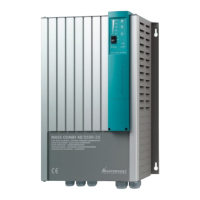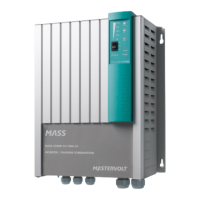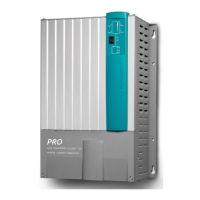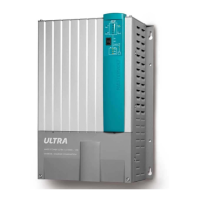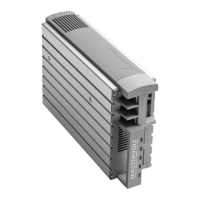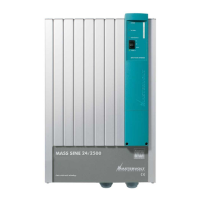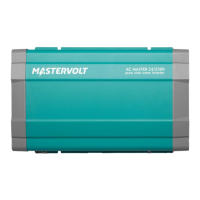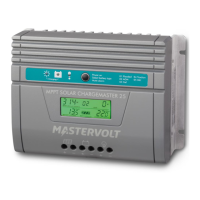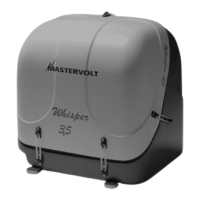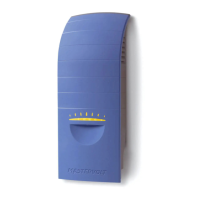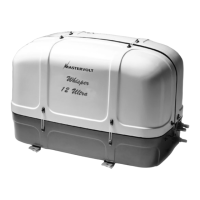During the float phase the Mass Combi Ultra switches to
Float voltage, refer to the specifications, and stabilises this
voltage to maintain the batteries in an optimum condition.
Connected DC-loads are powered directly by the charger.
If the load is higher than charger capacity, the required
additional power comes from the battery, which will be
progressively discharged until the charger automatically
switches back to the bulk phase. Once consumption
decreases, the charger goes back to normal operation of
the 3-step+ charge system.
As the Mass Combi Ultra is equipped with a 3-step+ charge
system, the batteries can also remain connected to the
Mass Combi Ultra in winter. One hour every 12 days the
charger automatically switches to the Bulk phase to keep
the battery working properly and prolong its life span. The
3-step+ charge system is also safe for all the connected
equipment.
3.2.2 Temperature compensated charging
The Mass Combi Ultra is delivered with a battery
temperature sensor. By installing this battery temperature
sensor (for Lead Acid batteries only) the charge voltages
are automatically adapted for deviating temperatures.
When the battery temperature is low, the charge voltage
increases. On the other hand, when the battery
temperature is high, the charge voltage is decreased.
Overcharge and gassing are prevented this way. This will
extend the life of your batteries.
Temperature compensated charging cannot
prevent the batteries from overcharging
situations.
3.2.3 Connection of a secondary battery
The Mass Combi Ultra is equipped with a secondary
charge output to use for charging a small battery set like a
starter battery. If the main battery nominal voltage is 24 V,
the secondary battery can be 24 V or 12 V. Maximum
output current as power supply or battery charger: 10 A.
3.3 Inverter
3.3.1 General
The inverter provides voltage and frequency regulated AC
power from a battery bank. Fast acting electronic circuits
protect the inverter against extreme overloads, low and
high battery voltage and overheating of the inverter.
A large momentary surge power is available for inductive
loads, such as electric motors.
3.3.2 Energy saving mode (selectable)
In the inverter mode the Mass Combi Ultra has a built-in
automatic energy saving feature that reduces battery
power consumption when no load is present on the
outputs. Response from idle is instant. In most cases the
operation is not noticeable. The energy saving mode can
be set by means of MasterBus or dipswitch A4, refer to
chapter 6, Configuration.
The Mass Combi Ultra scans the AC outputs with pulses of
230 V every 2½ seconds. When it detects a load that is
larger than 50 W (adjustable), it switches On the inverter
automatically.
Small loads such as clocks in VCRs or micro
waves are most likely not to work in this mode.
3.4 Operation modes
In the next sections different operation modes are
described.

